Research Introduction
Marine environment measurement system using microfluidic channels
| The importance of international efforts to continuously monitor global warming and environmental destruction over a wide range of global environmental changes is increasing. Satellite observations with a variety of instruments for climate, atmosphere, ocean, etc. are now being carried out, and the technology to continuously acquire data over a wide area is being established. In addition, the data can be calibrated by comparing them with the data measured in the field, which enables more accurate analysis. The integration of in-situ measurements and satellite observation data is a challenge to develop an in-situ measurement method to regularly monitor environmental changes over a wide area. Among the observed items, carbon dioxide has been measured at many fixed points in the atmosphere because its increase is considered to be a cause of global warming. On the other hand, it is known that about 30% of carbon dioxide in the atmosphere is absorbed by seawater. Observation of carbon dioxide concentration in seawater is as important as that in the atmosphere because it can lead to the estimation of the global amount of carbon dioxide and the prediction of climatic changes. In order to regularly observe carbon dioxide concentrations over a wide area of the ocean, ocean surface carbon dioxide sensors that can be attached to surface drifting buoys are being developed. Our research group aims to reduce the size and mass production of conventional ocean surface carbon dioxide sensors in order to increase the number of observation stations and to reduce operational costs, measurement solutions and materials, as well as to increase the integration of instruments mounted on surface drifting buoys. |
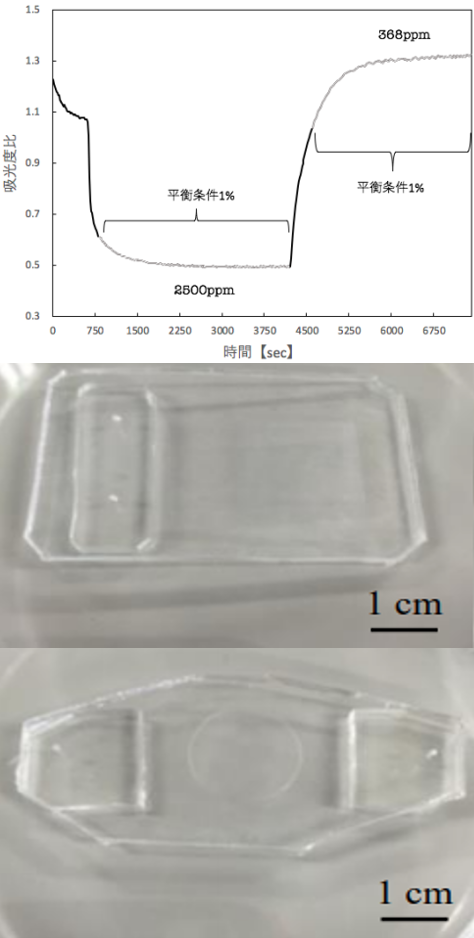 |
|
Intraoral Monitoring Using Ion-Selective Electrodes
| According to a global survey conducted from 1990 to 2015, the number of
oral diseases is reported to be increasing, and it is important to understand
the oral condition before oral diseases such as tooth decay develop from
the viewpoint of disease prevention. In order to monitor the oral condition,
the measurement of metabolites and ions contained in saliva is considered
to be an effective method. Currently, all-solid-state ion selective electrode
(SC-ISE) is used as a method to measure ion concentrations. Ionophores
are used as ion selective membranes. The ionophores are responsible for
transporting specific ions in the biomembrane. Therefore, by installing
multiple types of ionophores on the ISE and parallelizing them, an ISE
sensor array that can simultaneously measure multiple types of ions can
be created. It is a recent issue that SC-ISE is easily affected by foreign
ions other than target ions. Our research group is developing a device that can reduce the influence of foreign ions and measure the concentration of target ions with high accuracy by using multivariate analysis. |
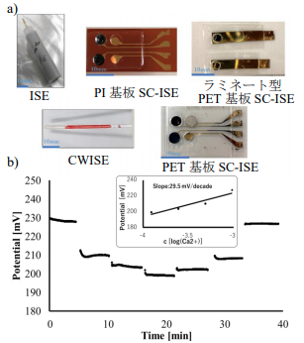 |
|
Cell Evaluation System Using Bio-MEMS
| In the study of cells, it is important to perform passaging culture. The
periodic detachment and dilution of sufficiently proliferated cells is
called passaging, which allows us to maintain a constant cell culture environment
in terms of space and nutrients. In the past, the detachment of cells during passaging was generally performed using enzymatic reagents, but since the cells were forcibly detached by enzymatic degradation of the extracellular matrix, damage to the cell membrane was unavoidable. On the other hand, with the development of tissue engineering, cell sheet detachment and recovery methods using temperature-responsive polymers such as PNIPAAm (poly-N-isopropyl acrylamide) have been widely investigated. However, the polymerization of polymers onto substrates is mainly done by electron beam irradiation or plasma polymerization, both of which are not easy and require expensive equipment, and therefore, have not been widely used. Our research group has developed a new method to fabricate temperature-responsive substrates by using spin-coating technology and applying the cell sheet recovery method to passaging to suppress cell membrane damage, We are also investigating a new method of cell passaging that does not require complicated manipulations. |
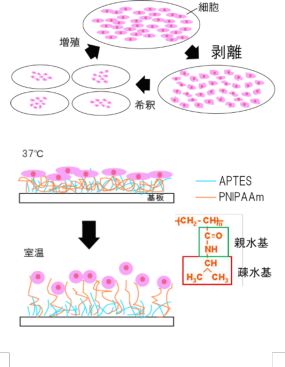 |
|
Development of Portable Solid Oxide Fuel Cells
| Necessary elements for next-generation energy are 1) high energy efficiency,
2) high energy density, and 3) few restrictions on the types of energy
fuels. A candidate for satisfying these elements is a solid oxide fuel
cell that can operate at high temperatures and is being commercialized
as a stationary power source. We are developing portable solid oxide fuel
cells by applying novel material synthesis, flow path, and device fabrication
technologies.
Tetsuya Yamada et al., ACS Applied Nano Materials, 2019.
Fig. Synthesis of Zirconia Nanosheets as Potential Electrolytes for Solid Oxide Fuel Cells |
||
Exploration of Solid Oxide Electrocatalysts Using Microreactors
| In order to achieve carbon neutrality, it is essential to develop a technology
to reduce carbon dioxide to methane, carbon monoxide, and other forms of
carbon dioxide using natural surplus energy, and effectively utilize them
as energy and materials. The focus is on solid oxide electrolysis, which
can reduce CO2 with high efficiency by driving a solid oxide fuel cell
in the reverse direction. The problem with solid oxide electrolysis is
that catalyst materials that can operate at sufficiently high temperatures
have not yet been developed. Therefore, we have developed an original reaction
vessel using microfluidic channels and microreactors to search for catalysts
that are active at high temperatures in a safe and high-throughput manner.
|
||
Application of Nano-Periodic Structures to Bioinstrumentation
| In recent years, on-site measurement of biomolecules such as DNA is required
for home medical diagnosis, intraoperative diagnosis, and borderline countermeasures
against infectious diseases. Traditionally, fluorescence measurement using
fluorescent dyes has been used to measure biomolecules. However, the large
size of the fluorescence measurement device used for the measurement is
said to make it unsuitable for on-site measurement. Therefore, we believe
that miniaturizing the fluorescence measurement device and enabling on-site
measurement will lead to early detection and early treatment of diseases
by using it for home medical diagnosis and intraoperative diagnosis. We
believe that the downsizing of fluorescence measurement devices is possible
by using photonic crystals, which are optical elements, to measure fluorescence
spectra in a controlled manner. Photonic crystals are characterized by
their ability to amplify wavelengths in a specific region, but because
they depend on the lattice constant and size of the photonic crystal, it
is necessary to fabricate a new device every time the measurement object
is changed. Therefore, by using a temperature-responsive polymer as a material
for photonic crystals, we have devised a method to fabricate photonic crystals
whose structure can be changed by temperature change, and the wavelength
range of amplification can be arbitrarily changed. Our research group has verified the effect of changes in the lattice constant of the photonic crystal on the peak wavelength of the emitted light, as well as the transfer to the thermoresponsive polymer, We are also examining the possibility of miniaturizing the fluorescence measurement system by transferring it to temperature-responsive polymers. |
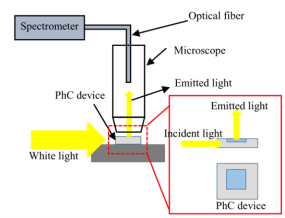 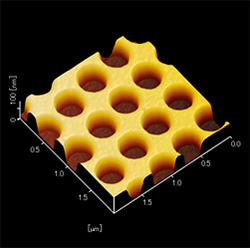 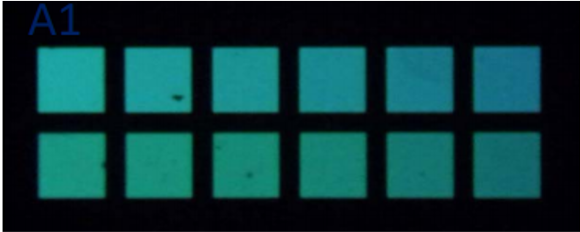 |
|
p. 901-902 (2017) |
||


